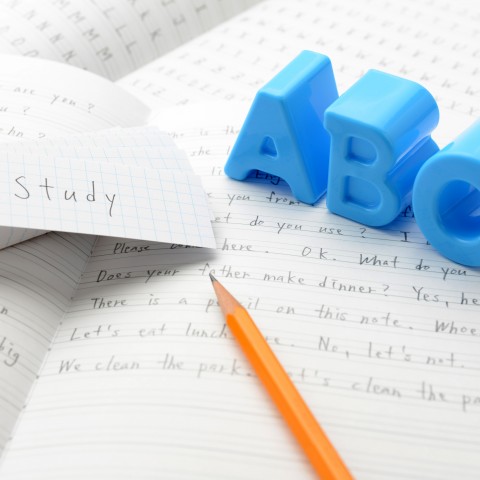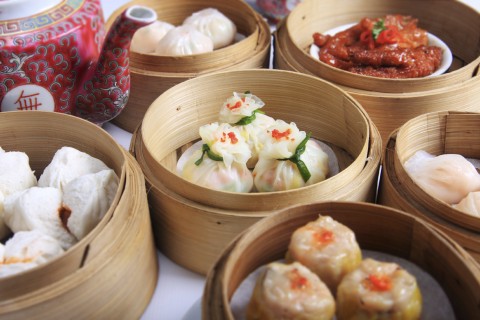
Do you find Cantonese intimidating? Sure, the nine Cantonese tones can be challenging at first, and the Chinese characters are a bit complicated. But there are various ways you can conquer these hurdles. One is to practice using and recognizing the most common Cantonese phrases for beginners right from the start.
In this article, you’ll find 40+ phrases every Cantonese beginner must know. This includes everything from simple greetings to useful phrases for other common situations, such as shopping, eating out, asking for help, and getting directions.

Learn Cantonese with these beginner phrases!
 Table of Contents
Table of Contents
- Greetings and Self-introductions
- Courtesy Phrases & Social Expressions
- Dining & Shopping Phrases
- Asking for Help
- How CantoneseClass101.com Can Help You Learn More Cantonese
1. Greetings and Self-introductions
When one starts learning a foreign language, the first set of beginner phrases they usually learn consists of basic greetings and self-introductions. Until you get more experienced, your conversations might not get much further than simple salutations.
- → Once you feel comfortable greeting others and asking simple questions, you might want to step up your game and go further with the introductions. Why not have a look at our complete guides on how to say hello and how to introduce yourself?

We have listed the top ten Cantonese greetings and self-introduction phrases below:
1 – 哈囉。
Romanization: haa1 lo3.
Meaning: Hello. (informal, for speech)
2 – 你好。
Romanization: nei5 hou2.
Meaning: Hello. (formal, for both speech and writing)
Literal translation: You good.
3 – 你好嗎?
Romanization: nei5 hou2 maa3?
Meaning: How are you? (formal, for both speech and writing)
4 – 早晨。
Romanization: zou2 san4.
Meaning: Good morning. (formal, for both speech and writing)
5 – 午安。
Romanization: ng5 on1.
Meaning: Good afternoon. (formal, for both speech and writing)
Literal translation: Noon safe.
6 – 晚安。
Romanization: maan5 on1.
Meaning: Good evening (formal, for both speech and writing)
Literal translation: Night safe.
7 – 喂。
Romanization: wai2.
Meaning: Yo. / Hello. (informal, for phone calls only)
8 – 我叫____。
Romanization: ngo5 giu3____.
Meaning: My name is ____.
Literal translation: I called ____.
9 – 你叫咩名?
Romanization: nei5 giu3 me1 meng2?
Meaning: What is your name?
Literal translation: You called what name?
10 – 我係美國人。
Romanization: ngo5 hai6 mei5 gwok3 jan4.
Meaning: I am American.
Note: You may replace “美國” with your own country. Here are some examples:
- Italy: 意大利 (ji3 daai6 lei6)
- Brazil: 巴西 (baa1 saai1)
- Japan: 日本 (jat6 bun2)
- UK: 英國 (jing1 gwok3)
- Denmark: 丹麥 (daan1 mak6)
- France: 法國 (faat3 gwok3)
- The Netherlands: 荷蘭 (ho4 laan1)
- US: 美國 (mei5 gwok3)
2. Courtesy Phrases & Social Expressions
Manners Maketh Man.
Courtesy is the lubricant that makes society run smoothly. It helps ease the friction between people with different backgrounds and acts as a framework for peaceful social interactions.
- → A simple “sorry” might not be enough if you’ve really messed up, but you’ll find everything you need for a meaningful apology in our extensive guide on how to say sorry in Cantonese.

Here are ten simple phrases in Cantonese that will help you be polite and courteous in your daily interactions:
1 – 唔該。
Romanization: m4 goi1.
Meaning: Thank you. (When someone offers to help you)
2 – 多謝。
Romanization: do1 ze6.
Meaning: Thank you. (When someone presents a gift)
Literal translation: Many thanks.
3 – 唔使客氣。
Romanization: m4 sai2 haak3 hei3.
Meaning: You’re welcome.
Literal translation: No need (to be) courteous.
4 – 對唔住。
Romanization: deoi3 m4 zyu6.
Meaning: Sorry.
5 – 唔好意思。
Romanization: m4 ho2 ji3 si3.
Meaning: Excuse me. / Sorry.
6 – 好。
Romanization: hou2.
Meaning: Good. / Fine. / Yes. / Alright.
7 – 再見。
Romanization: zoi3 gin3.
Meaning: Bye.
8 – 遲啲見。
Romanization: ci4 di1 gin3.
Meaning: See you later.
Literal translation: Later see.
9 – 保重。
Romanization: bou2 zung6.
Meaning: Take care.
10 – 唔緊要。
Romanization: m4 gan2 jiu3.
Meaning: No worries. / Never mind.
Literal translation: Not important.
3. Dining & Shopping Phrases
As you travel through Hong Kong, you’ll soon enough surrender to the temptation of the many shops, markets, restaurants, food stalls, and bakeries. Ordering from unsuspecting clerks with limited English skills will give you the perfect opportunity to practice your Cantonese.
- → If you’re going to the market, make sure you synchronize your grocery list and your flashcards! Let’s start with a list of fruits and vegetables with example sentences and recordings.

Below, you’ll find several Cantonese beginner phrases to use as you dine and shop in Hong Kong.
1 – 幾多錢呀?
Romanization: gei2 do1 cin2 aa3?
Meaning: How much is this?
2 – 你哋有冇糯米雞?
Romanization: nei5 dei2 jau5 mou5 lo6 mai5 gai1?
Meaning: Do you have any lo mai gai (steamed glutinous rice with chicken)?
Note: You may replace “糯米雞” with the name of whatever thing you want to inquire about. For example:
- Pineapple bun: 菠蘿包 (bo1 lo4 baau1)
- Green onion pancake: 蔥油餅 (cung1 jau4 beng2)
- Soup dumpling: 小籠包 (siu2 lung4 baau1)
- Sweet and sour pork: 咕嚕肉 (gu1 lou1 juk6)
- Notebook: 筆記簿 (bat1 gei3 bou2)
- Pencil: 鉛筆 (jyun4 bat1)
- Cup: 杯 (bui1)
- Box: 盒 (hap2)
3 – 我想要點心。
Romanization: ngo5 soeng2 jiu3 dim2 sam1.
Meaning: I want dim sum.
Note: You may replace “點心” with the name of the dish or item you want to order. For example:
- Dumplings: 餃子 (gaau2 zi2)
- Mooncake: 月餅 (jyut6 beng2)
- Egg roll: 蛋卷 (daan6 gyun2)
- Peking duck: 北京烤鴨 (bak1 ging1 haau1 aap2)
- Ball pen: 原子筆 (jyun4 zi2 bat1)
- Coffee beans: 咖啡豆 (gaa3 fe1 dau2)
- Fruit: 水果 (seoi2 gwo2)
- Salt: 鹽 (jim4)
4 – 太貴喇。
Romanization: taai3 gwai3 laa3.
Meaning: It’s too expensive.
5 – 我俾唔起。
Romanization: ngo5 bei2 m4 hei2.
Meaning: I can’t afford it.
6 – 我可唔可以退貨?
Romanization: ngo5 ho2 m4 ho2 ji5 teoi3 fo3?
Meaning: Can I return the goods? / Can I get a refund?
7 – 我可唔可以退款?
Romanization: ngo5 ho2 m4 ho2 ji5 teoi3 fun2?
Meaning: Can I get a refund?
8 – 可唔可以俾個袋我呀?
Romanization: ho2 m4 ho2 ji5 bei2 go3 doi2 ngo5 aa3?
Meaning: Can I have a bag?
9 – 你找錯錢。
Romanization: nei5 zaau2 co3 cin2.
Meaning: You gave me the wrong change.
10 – 我可唔可以用信用卡找數?
Romanization: ngo5 ho2 m4 ho2 ji3 jung6 seon3 jung6 kaat1 zaau2 sou3?
Meaning: Can I pay with a credit card?
11 – 可唔可以換細一個碼?
Romanization: ho2 m4 ho2 ji5 wun6 sai3 jat1 go3 maa5?
Meaning: Can you exchange it for a smaller size?
4. Asking for Help
Since you’re reading these beginner phrases, chances are you’re not yet fluent in Cantonese. As a result, there might be times during your travels when you get a little lost and confused. This is perfectly fine, as long as you can explain the situation and move on.
Maybe you want to say that you don’t speak Cantonese very well, that you don’t understand, or that you’d like the other party to repeat what they said. It’s better to use Cantonese in these situations because the longer you keep the conversation going, the more you’ll progress!
- → Asking for directions isn’t always as simple as locating the bathroom. If you’re traveling to Hong Kong, make sure you come prepared! We recommend checking out our list of must-know Cantonese travel phrases.

Here are the most useful phrases in Cantonese for beginners who aren’t yet confident in their speaking or listening skills:
1 – 我可以點去巴士站呀?
Romanization: ngo5 ho2 ji5 dim2 heoi3 baa1 si2 zaam6 aa3?
Meaning: How do I get to the bus stop?
Note: You may replace “巴士站” with the name of whatever place you want to inquire about. For example:
- Airport: 機場 (gei1 coeng4)
- Hotel: 酒店 (zau2 dim3)
- Mall: 商場 (soeng1 coeng4)
- Supermarket: 超級市場 (ciu1 kap1 si5 coeng4)
- Bank: 銀行 (ngan4 hong4)
- Hospital: 醫院 (ji1 jyun2)
- Post office: 郵局 (jau4 guk2)
- Library: 圖書館 (tou4 syu1 gun2)
2 – 便利店喺邊呀?
Romanization: bin6 lei6 dim3 hai2 bin1 aa3?
Meaning: Where is the convenience store?
Note: You may replace “便利店” with the name of whatever place you want to inquire about. For example:
- Bakery: 餅店 (beng2 dim3)
- Police station: 警局 (ging2 guk2)
- Pharmacy: 藥房 (joek6 fong4)
- Movie theater: 戲院 (hei3 jyun2)
- Restaurant: 餐廳 (caan1 teng1)
- Barbershop: 飛髮舖 (fei1 faat3 pou2)
- Bookstore: 書局 (syu1 guk2)
- Florist: 花店 (faa1 dim3)
3 – 我唔識講廣東話。
Romanization: ngo5 m4 sik1 gong2 gwong2 dung1 waa2.
Meaning: I can’t speak Cantonese.
4 – 你識唔識講英文呀?
Romanization: nei5 sik1 m4 sik1 gong2 jing1 man2 aa3?
Meaning: Do you speak English?
5 – 我唔明。
Romanization: ngo5 m4 ming4.
Meaning: I don’t understand.
6 – 唔該幫我叫醫生。
Romanization: m4 goi1 bong1 ngo5 giu3 ji1 saang1.
Meaning: Please call a doctor for me.
7 – 救命!
Romanization: gau3 meng6!
Meaning: Help!
8 – 可唔可以喺張地圖度,指俾我睇呀?
Romanization: ho2 m4 ho2 ji5 hai2 zoeng1 dei6 tou4 dou6, zi2 bei2 ngo5 tai2 aa3?
Meaning: Can you show me on the map?
9 – 呢班車去邊度㗎?
Romanization: ni1 baan1 ce1 heoi3 bin1 dou6 gaa3?
Meaning: Where does this bus go?
10 – 請講多一次。
Romanization: cing2 gong2 do1 jat1 ci3.
Meaning: Once again, please.
5. How CantoneseClass101.com Can Help You Learn More Cantonese
Can’t wait to continue your Cantonese journey after mastering these beginner phrases? We know that learning a new language can be tiresome or even lonely, but with the right tools, you can master this beautiful language without all the struggling.
With CantoneseClass101.com, you can have your daily dose of Cantonese whenever and wherever you want, through mobile apps, desktop software, and our website. We offer entertaining, engaging, and effective lessons on various aspects of the Cantonese language and culture.
Until now, we’ve delivered more than 750,000,000 lessons to thousands of happy students from all around the globe. You can learn Cantonese with over 1060 audio and video lessons delivered by our knowledgeable and energetic hosts, detailed PDF lesson notes, an abundance of vocabulary learning tools, spaced repetition flashcards, and a lively community to discuss the lessons with fellow learners. What are you waiting for? Download our lessons, enjoy our audio and video files, and start learning now!
And keep in mind that if you prefer a 1-on-1 learning approach and want to further accelerate your Cantonese learning, you can take advantage of our MyTeacher service!
Know that your hard work will pay off, and before you know it, you’ll be speaking Cantonese like a native!










